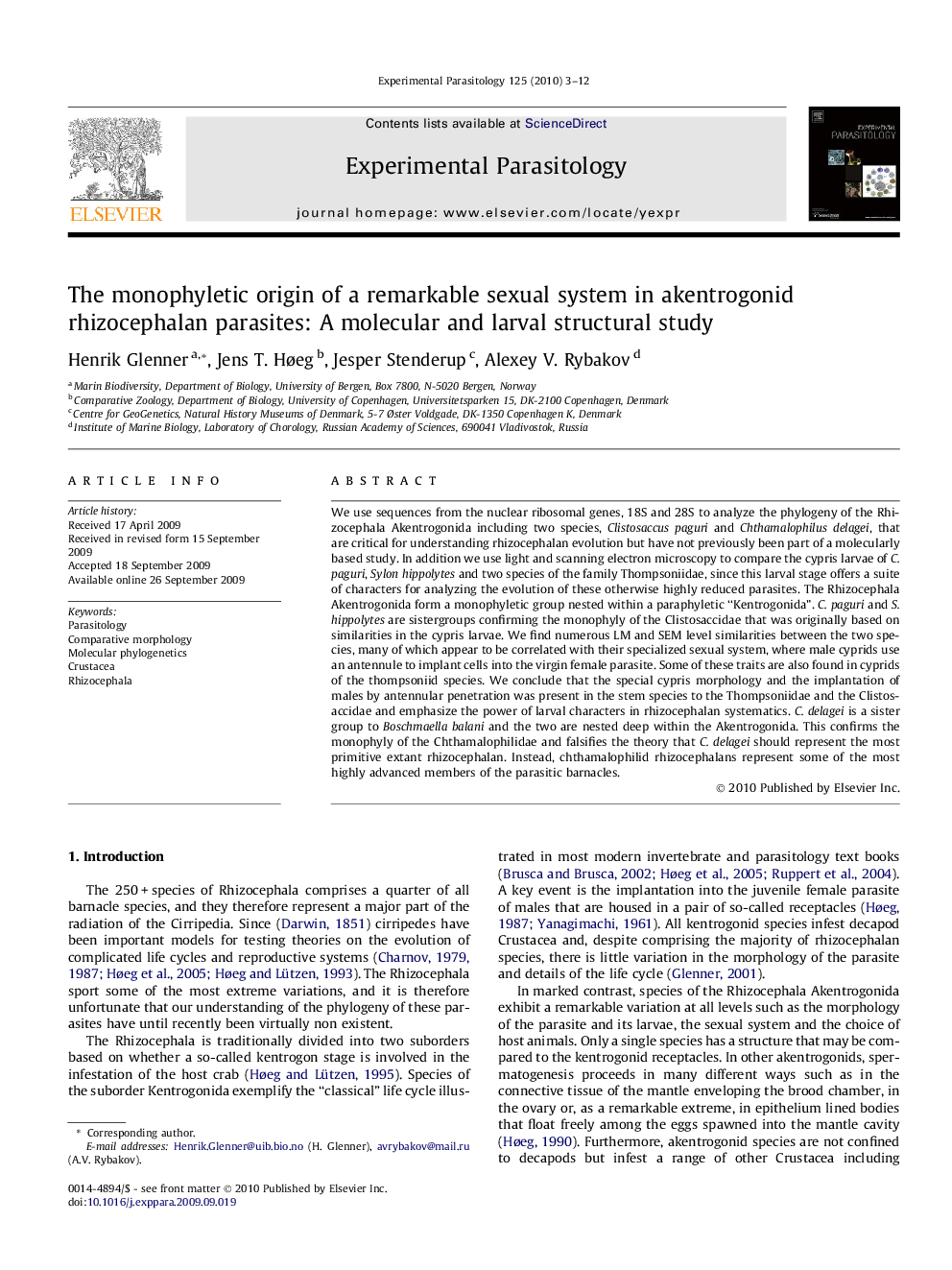| کد مقاله | کد نشریه | سال انتشار | مقاله انگلیسی | نسخه تمام متن |
|---|---|---|---|---|
| 4371409 | 1302516 | 2010 | 10 صفحه PDF | دانلود رایگان |

We use sequences from the nuclear ribosomal genes, 18S and 28S to analyze the phylogeny of the Rhizocephala Akentrogonida including two species, Clistosaccus paguri and Chthamalophilus delagei, that are critical for understanding rhizocephalan evolution but have not previously been part of a molecularly based study. In addition we use light and scanning electron microscopy to compare the cypris larvae of C. paguri, Sylon hippolytes and two species of the family Thompsoniidae, since this larval stage offers a suite of characters for analyzing the evolution of these otherwise highly reduced parasites. The Rhizocephala Akentrogonida form a monophyletic group nested within a paraphyletic “Kentrogonida”. C. paguri and S. hippolytes are sistergroups confirming the monophyly of the Clistosaccidae that was originally based on similarities in the cypris larvae. We find numerous LM and SEM level similarities between the two species, many of which appear to be correlated with their specialized sexual system, where male cyprids use an antennule to implant cells into the virgin female parasite. Some of these traits are also found in cyprids of the thompsoniid species. We conclude that the special cypris morphology and the implantation of males by antennular penetration was present in the stem species to the Thompsoniidae and the Clistosaccidae and emphasize the power of larval characters in rhizocephalan systematics. C. delagei is a sister group to Boschmaella balani and the two are nested deep within the Akentrogonida. This confirms the monophyly of the Chthamalophilidae and falsifies the theory that C. delagei should represent the most primitive extant rhizocephalan. Instead, chthamalophilid rhizocephalans represent some of the most highly advanced members of the parasitic barnacles.
Journal: Experimental Parasitology - Volume 125, Issue 1, May 2010, Pages 3–12